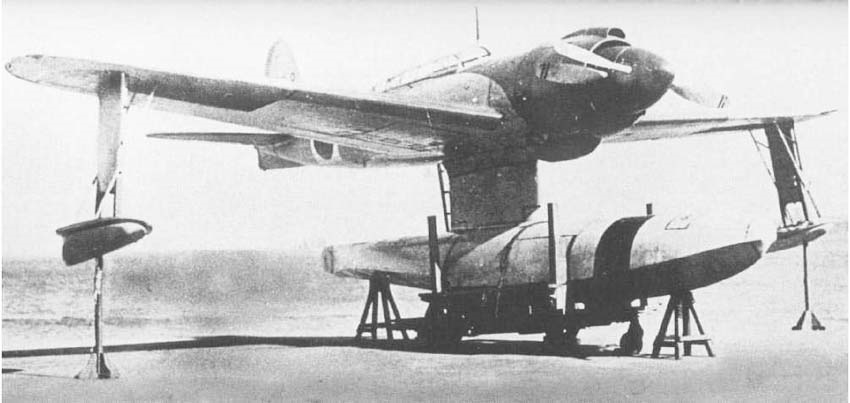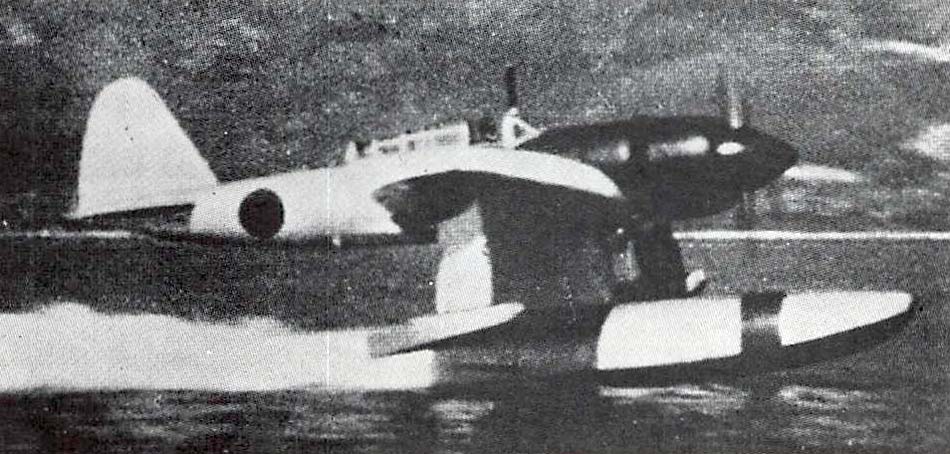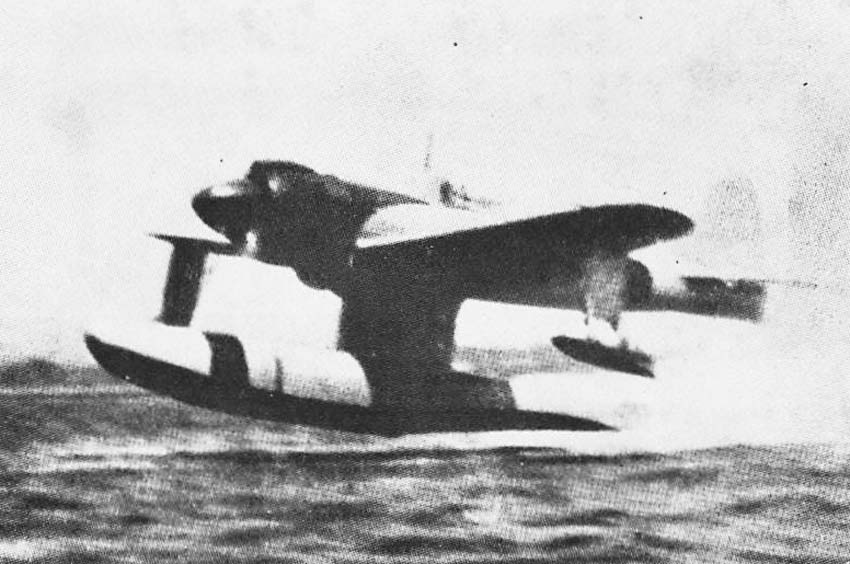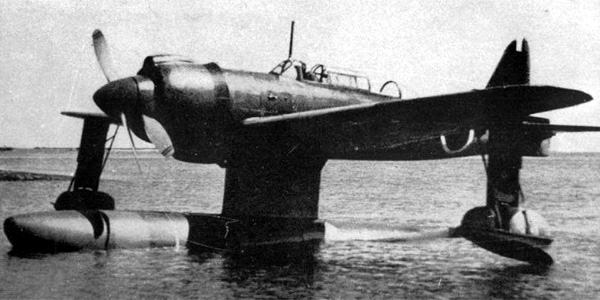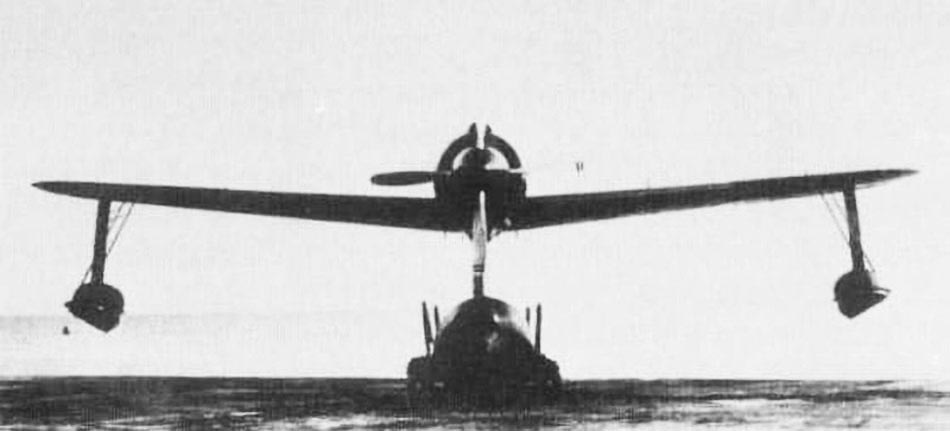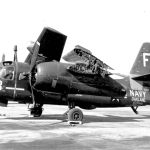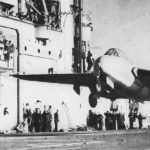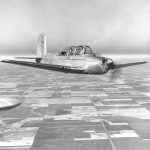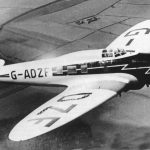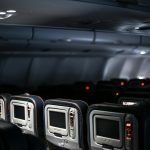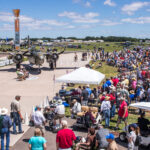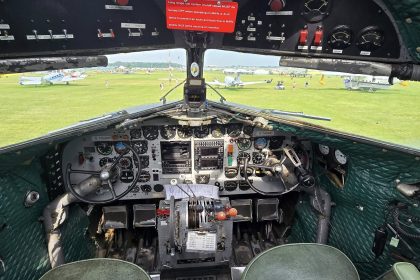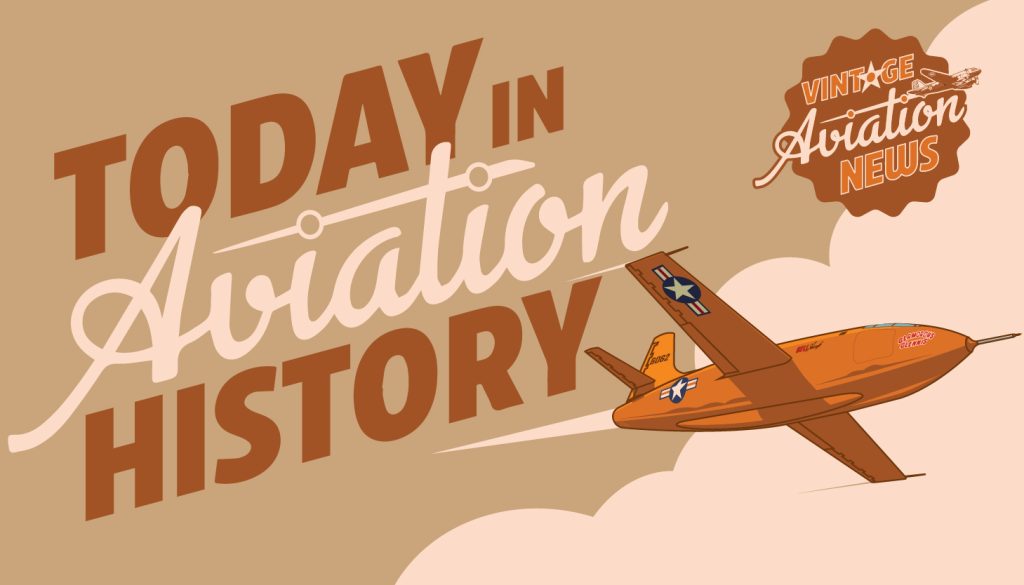
The design of what would become the Kawanishi E15K began in 1939 when the Japanese Navy was building a new class of light cruiser, the Ōyodo class. In concert with the Ōyodo and her planned sister ship the Niyodo, (only Ōyodo would eventually be completed to enter service), the Navy sought a new catapult-launched reconnaissance floatplane that could outrun enemy fighters and a combat range of 800 nautical miles. The task fell to Kawanishi, which had already developed several reconnaissance floatplanes and maritime patrol flying boats already in service with the Imperial Japanese Navy. Internally called the K-10, its contract for the IJN was initially dubbed the Navy Type 2 High-speed Reconnaissance Seaplane.
The Shiun was fitted with a Mitsubishi Kasei (Mars) two bank, 14-cylinder radial engine, rated at 1,460 hp at takeoff power. In order to minimize the effects of torque on the aircraft, the Shiun was equipped with the MK4D variant of the Kasei engine, which was modified to accept contra-rotating two-bladed propellers. Additionally, the Shiun incorporated a laminar flow airfoil to reduce drag. These features in particular were also shared with the N1K1 “Kyofu” (Mighty Wind; Allied reporting name “Rex”) seaplane fighter, which was intended to be deployed from islands too small to have a conventional airfield. But there were also several key distinctions between the Kyofu and the Shiun.
The two stabilizing floats on the wingtips, consisting of duralumin bottoms and inflatable fabric tops reinforced with rubber, could partially retract into the wings to reduce drag, and the centrally mounted float was designed to be jettisoned should a pilot feel he needed to evade a pursuing fighter. It was estimated that the aircraft would gain an extra 90 mph by doing so. However, this would mean that the Shiun’s pilot would have to ditch the aircraft in the water, with the stabilizing floats deploying to add buoyancy to the aircraft. Finally, the aircraft would have a two-man crew consisting of a pilot and a rear gunner, who manned a single 7.7mm machine gun for defense. The aircraft even had an early analog autopilot system.
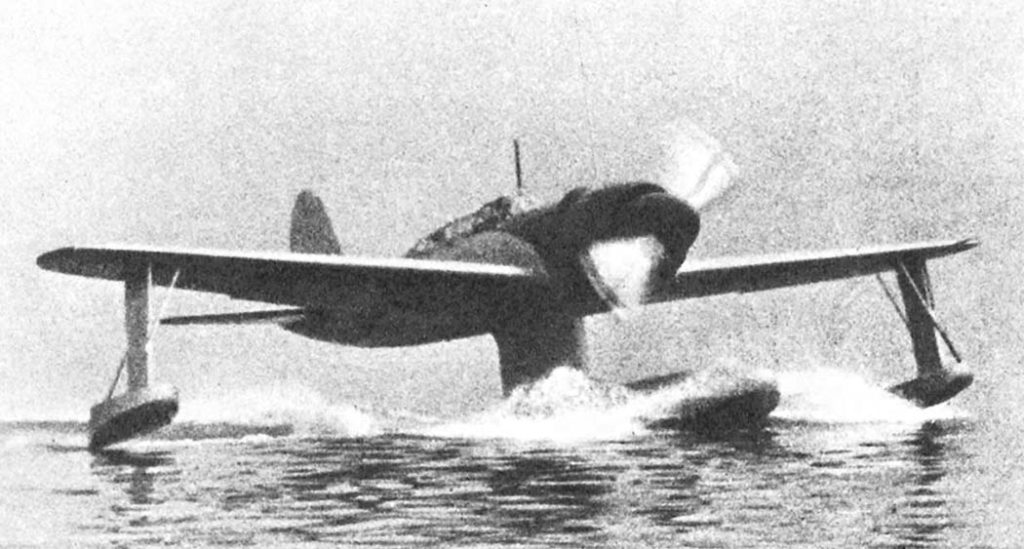
The first E15K1 Shiun prototype made its first flight on December 5, 1941 (some sources, though, claim it flew on December 3), and was reported to have good handling characteristics. Soon, five more prototypes were built and began undergoing flight tests as part of the Yokosuka Kōkūtai (Yokosuka Air Group). But further development with revealed several teething issues with the design.
For one, the engine had vibration issues, the propeller governor would malfunction, the flaps and autopilot system would not operate correctly, and the mechanism for jettisoning the central float, though tested on wind tunnel models, often failed to work during flight tests, and at least one of the prototypes was heavily damaged on landing due to the failure of the floats and flaps, leading to costly repairs. A major improvement to the aircraft was the introduction of an upgraded version of the Kasei, the MK4S, increasing the horsepower output to 1,850 hp, but by the time the Ōyodo was commissioned in February 1943, the E15K was not made operational until August. Though some flights were conducted on the Ōyodo, the teething issues of the E15K led to the cruiser receiving a complement of Aichi E13As (Allied reporting name: “Jake”), which were already in service with the IJN.
With the aforementioned technical problems still plaguing the design, and a few of the aircraft being written off because of this, production of the E15K came to a halt in February 1944, with Kawanishi being ordered to focus production efforts on a land-based version of the N1K Kyofu, the N1K-J Shiden (Violet Lightning; Allied reporting name “George”), which would be regarded as one of the Imperial Japanese Navy’s best land-based fighters of the war. In total, only 15 E15Ks were ever built (six prototypes and nine production aircraft), and their combat record would prove to be exceedingly brief.
The first six examples of the E15K to enter operational service were inducted into the 12th Reconnaissance Squadron of the 61st Air Flotilla on April 30, 1944. The 61st Air Flotilla was under the original 343rd Kōkūtai (Naval Air Group) (which was later reformed as a fighter unit) and was deployed to Arakabesan Seaplane Base on Arakabesan Island (also called Ngerekebesang Island), part of the modern-day island nation of Palau, which Japan had taken from Germany during World War I. Soon after, the Shiuns began to be mobilized for their ferry flights from Yokosuka to Palau. On June 1, the first three aircraft made the journey without incident, and were tasked with flying reconnaissance missions to search for the American fleet that was set to invade the Mariana Islands. All the while, the American fleet carriers had their fighter wings full of Grumman F6F Hellcats, which were capable of catching up to the Shiuns, along with the Vought F4U Corsair.
However, the Shiun would suffer its first combat losses on June 15, 1944, when two E15Ks that had landed at the Japanese base on Chichijima in the Bonin Islands were caught up in an American air raid. Unable to take off due to suboptimal wave conditions, they were strafed by Hellcat fighters and destroyed. Due to the fact that it was a new design that was unfamiliar to the Allies at the time, the Hellcat pilots thought they had destroyed two “Rufes,” the reporting name for the Nakajima A6M2-N, a floatplane variant of the A6M2 Zero.
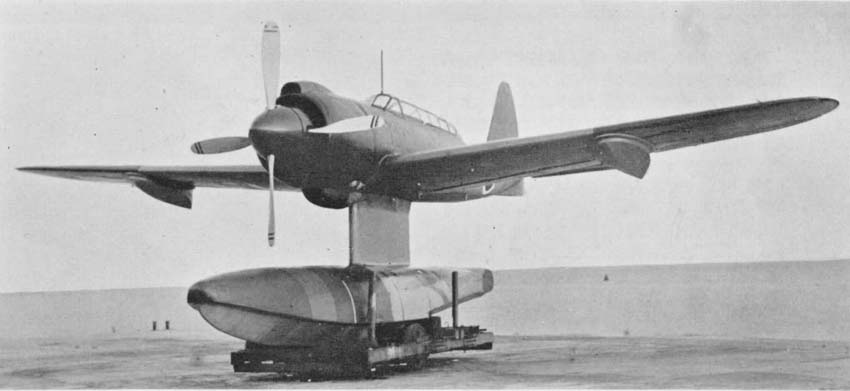
On July 25, 1944, the only instance where the Shiun was engaged in aerial combat took place when two aircraft, one flown by Ryogo Tsukada and Yoshihiro Hayashida, and the second being flown by Yukigami Nakagawa and Matsushiro Shimizu, went up on a routine patrol. During this sortie, the two aircraft were attacked by three F6F Hellcats. However, the American and Japanese accounts of this incident differ from one another. The Americans would later report to have shot down one of the Japanese aircraft, and claimed a probable, but according to the squadron records, the aircraft flown by Nakagawa and Shimizu managed to detach its float and make haste for its home base, while Tsukada and Hayashida’s aircraft was set aflame, with Hayashida in the rear being wounded by American gunfire and Tsukada suffering burns to his face. However, Tsukada put his aircraft into a controlled dive and managed to put out the fire just above the surface of the ocean. Though the two aircraft returned to Arakabesan with their crews still alive, they were written off due to the damage they sustained, with Nakagawa and Shimizu’s plane being damaged during its ditching after its main float was jettisoned, and Tsukada and Hayashida’s aircraft having sustained too much damage from the aerial encounter with the Americans, leaving just one E15K in operational condition on Arakabesan.
By August 1944, the Americans had decisively defeated the Japanese Navy at the Battle of the Philippine Sea, recaptured Guam and taken Saipan and Tinian, with all three islands allowing the new Boeing B-29 Superfortress the ability to launch raids on the Japanese Home Islands. Worse still for the Japanese in Palau, the Americans were coming to seize the island chain, particularly the airfield on Peleliu to the south of Arakabesan, in order to secure their flank for the upcoming liberation of the Philippines. On August 12, 1944, the Shiun unit was disbanded, and all personnel and equipment were sent back to Yokosuka.
Though the brief combat record of the Shiun began and ended in Palau, a couple aircraft remained on Japanese Home Islands, where their use was limited due to the shortage of spare parts. Today, there are no surviving E15K Shiuns/”Norms” on display in museums, and the aircraft remains an obscure footnote, even in Japanese aviation circles. But in recent years two underwater wrecks have been discovered in Chuuk Lagoon and off Palau (The wreck in Palau is documented here: The BentProp Project).
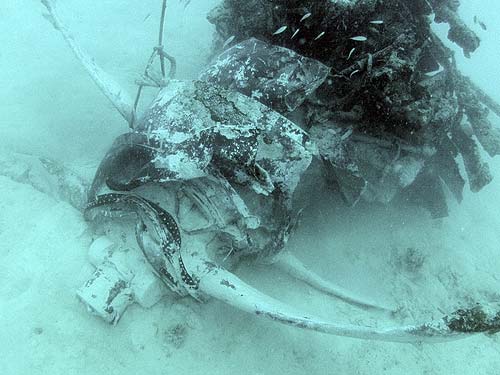
Only a few wartime photos, postwar recollections of surviving crews, and a scattering of scant sources remain to stand testimony for an aircraft that was forward-thinking at the start of the war but by the time it was fully ready to see combat, it was unable to make a difference in the war’s outcome.
Today in Aviation History is a series highlighting the achievements, innovations, and milestones that have shaped the skies. All the previous anniversaries are available HERE






